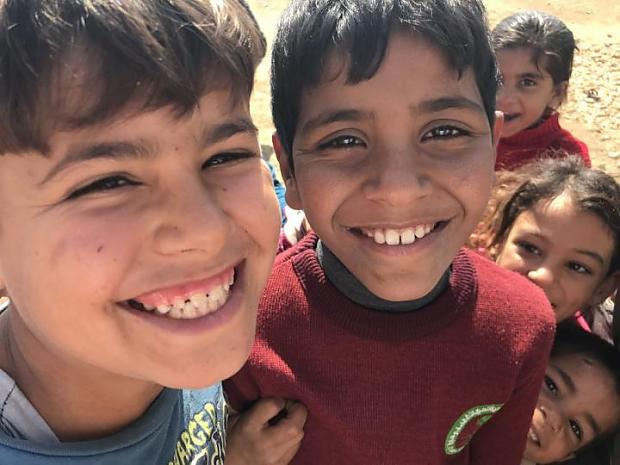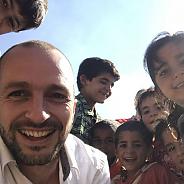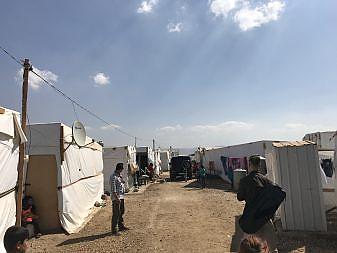For Karim – and many others
For Karim – and many others

Can we imagine it? That during a war in our neighbouring countries more than six million Germans or Belgians would be admitted? It’s an enormous number, but one comparable to what Lebanon is doing in the here and now. With four million inhabitants, the country has taken in one-and-a-half million refugees. And it is coming apart at the seams.
By Maarten Hijink
I have spent the last few days in Lebanon. We have seen heartbreaking situations: a family with six children but only one mattress; children sleeping with only a thin cloth between them and the pebbles; children who can sometimes go to school, though often not, but who have no future; young children sometimes who work illegally on the land for six hours a day, for which they earn $4.
We all w ant as few people as possible to be forced to flee. But if we don’t want that, we can’t simply leave the Lebanese and Syrians to it. We saw a lot of effective projects. Dutch local authorities who have helped to clear away a rubbish tip, to the advantage of the local population and the refugees. Or take the women’s refuge which Lebanese and Syrian women and children who have been ill-treated or abused can go. Effective aid, and corrupt use of the money avoided.
ant as few people as possible to be forced to flee. But if we don’t want that, we can’t simply leave the Lebanese and Syrians to it. We saw a lot of effective projects. Dutch local authorities who have helped to clear away a rubbish tip, to the advantage of the local population and the refugees. Or take the women’s refuge which Lebanese and Syrian women and children who have been ill-treated or abused can go. Effective aid, and corrupt use of the money avoided.
I was touched by Karim’s story, a young boy who was plucked from tragedy just in time, and given lessons in computing and drawing. He was able to sleep in one of the dormitories, but when the time came to go to bed he didn’t want to sleep. He’d never had a bed completely to himself, but he wanted to enjoy every moment, so that it would never pass.
 It’s easy to be cynical about refugees and the organisations which help them. But it’s very simple. You can talk about having refugee camps in the region, but they don’t build themselves. People have to have a reason to stay rather than travelling still further from home. And that’s what these projects provide. Despite corrupt government and politicians who often think of nothing but what’s good for them personally, these organisations really do make a difference. You can take a traumatised child, whose first drawings were of nothing but weapons and flags, and allow him, through a little help, to be a child once again, one who draws trees and houses.
It’s easy to be cynical about refugees and the organisations which help them. But it’s very simple. You can talk about having refugee camps in the region, but they don’t build themselves. People have to have a reason to stay rather than travelling still further from home. And that’s what these projects provide. Despite corrupt government and politicians who often think of nothing but what’s good for them personally, these organisations really do make a difference. You can take a traumatised child, whose first drawings were of nothing but weapons and flags, and allow him, through a little help, to be a child once again, one who draws trees and houses.
- See also:
- World
